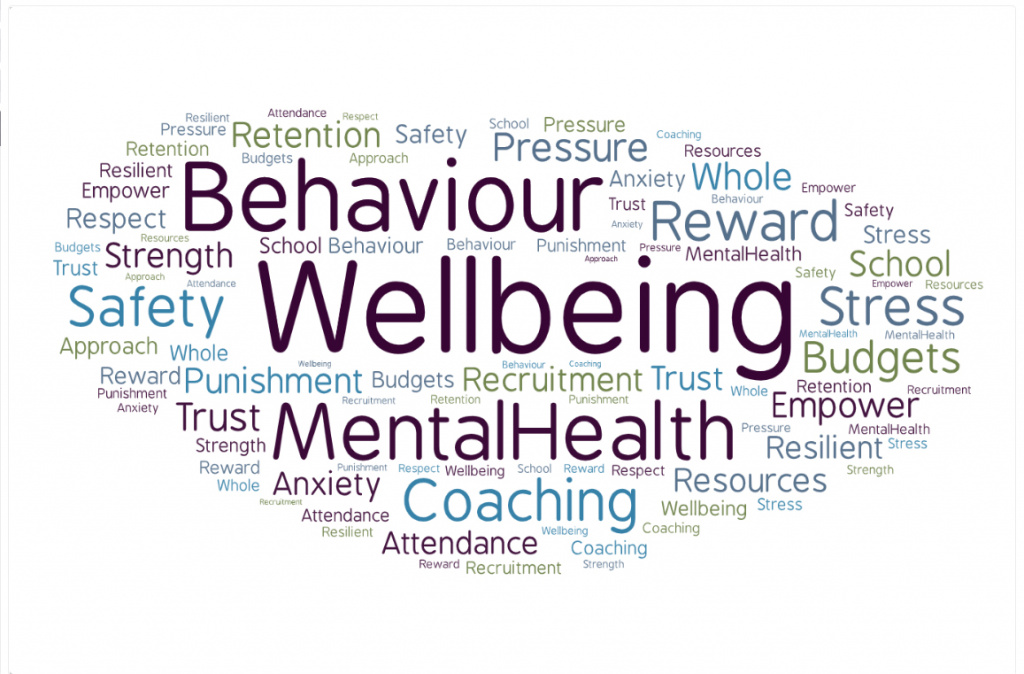
A new year and a new beginning. It might not have the urgency of the start of the academic year but there is something about January that makes schools re-evaluate what they are doing. In 2023 there is a sense in many schools that we cannot carry on doing things in the same old way. Too much stress and pressure have led to high staff turnover, while school leaders are coming to accept that an OFSTED Outstanding verdict or superb exam results may have been achieved at the cost of staff and student wellbeing.
In response to concerns from schools, TeachingTimes and Microlinkpc Education launched a new service last year. Raising Attainment with Wellbeing (RAW) is a series of carefully targeted modules, plus coaching support to make schools more inclusive, happier environments.
Written and run by experts with a proven track record in education at a senior level, RAW is helping schools to change. Since being launched in Summer 2022 the programme has been inundated with requests from schools all over the country and continues to grow month by month. TeachingTimes talked to two of the coaches to find out what RAW offers and why it is needed.
Jon Drew: ‘I think headteachers, school leaders, classroom-based practitioners are running on empty.’
Jon has been in education for over thirty years. After several senior leadership roles, he has more recently been a facilitator and trainer with the Anti-Bullying Alliance and a coach with the Youth Justice Service, developing Emotion Coaching across several London boroughs. He believes that the current low levels of wellbeing and high levels of mental health problems have had a damaging impact on the health, education and development of young people. Schools are under-resourced and despite the government’s increased funding, budgets are stretched and teachers’ workloads have increased. While some schools radiate a positive vibe, from the reception staff to parents, others are downbeat, and it shows.

‘We’re emerging from a pandemic with families bereaved; we’ve got a war in Europe and an ongoing cost of living crisis. A considerable proportion of our 6.6 million households with dependent children are facing or are already in fuel poverty. In turn, this impacts on the mood and atmosphere in schools. Children and staff are under increasing pressure. The government white paper on Levelling Up has set a target of 90% of pupils to achieve the expected standard in reading, writing and maths at the end of Key Stage 2 by 2030. The DfE set targets, but what I see are increasing levels of anxiety as a result.
Where you have got environments that are hostile or aggressive, chaotic or unpredictable that’s harmful to mental health. It can lead to stressful teaching and working conditions and then expectations around behaviour and attendance add to the pressure. When teachers leave, it may not be possible to replace them. This can lead to subject shortages, non-specialist teachers responsible for key subjects, less experienced staff. Many schools that have signed up for RAW have identified that the mental health and wellbeing of their teaching staff are priorities. They are concerned about the recruitment and retention of teachers, the recruitment and retention of support staff.
If you’re going to promote mental health and wellbeing in schools, it’s important that schools have a clear understanding both of the risk factors for mental health and wellbeing and the protective factors that can enable the school as a community to be more resilient.’
Denise Williams: ‘You develop great relationships with school staff and see the schools grow in confidence’

Denise has had experience of helping those schools that have exhausted their resources. She has been an Achievement Coach, Local Authority Adviser, Director, Headteacher, Consultant and Executive Headteacher. She was also a highly successful Interim Headteacher, changing the culture in five schools in five years by promoting a whole school approach with high levels of staff/pupil and parent/carer engagement. Initially some schools had a culture of negativity and punishment that needed to be addressed.
‘Staff morale may be low due to a range of areas including a behaviour policy that is not working, leaving staff facing a range of pupil behaviour challenges. It may be that the behaviour policy is too heavily focused on punishment rather than on good behaviour and a meaningful reward system. Another indicator is poor attendance and there must be incentives so that pupils want to come to school and feel a sense of belonging. To promote wellbeing and inclusion all aspects of behaviour management must be agreed and modelled across the school.
Opening up a programme of wider opportunities to enthuse the children and making clubs and activities available to all children is key to improving attendance. Working closely with the whole school community, including pupils, parents and carers, should be included and they must be made to feel part of the process and build an ethos of trust and respect.
I have worked with several of the schools now and they’re all really excited and planning to go for the Gold Award. We need to foster a Can-Do attitude and so I think nurturing wellbeing is really key. There is no doubt that if we sow good seeds when the children are young, we make them more confident. They have better self-esteem so they learn to stand on their own two feet and be more in control of their lives.’
Improving mental health and wellbeing
If teachers have low levels of mental health and wellbeing that will transfer to the learners. A good starting point for schools is to use a wellbeing survey such as Welbee or Anna Freud. The human brain will always prioritise safety over learning. Children and adults constantly monitor their environments for safety cues. Staff work hard to present a calm secure setting but children are attuned to teachers’ moods. The aim of the RAW programme is to find ways to empower teachers which in turn will empower pupils.
What makes RAW different?
RAW starts from where the school is. The Initial Needs Analysis is a powerful tool which allows settings to benchmark their current practice and to identify priority areas for change. It shows a school’s strengths and where the gaps are and signposts a route through the programme, so it’s very easy to use.
Each school has different priorities, different needs. RAW is not prescriptive: rather it offers a series of modules so schools can choose their own starting point. There are five modules with a total of 238 lessons:
- Setting The Scene for School Leaders
- Wellbeing and Core Strength
- Making Sense of Behaviour
- Changing Culture and Climate
- Accelerating Development
In one school the Senior Leadership Team worked through the Initial Needs Analysis and quickly realised that there were two elements of the programme that they really needed to focus on as a school community. They went straight into those modules, looked at the resources and the videos, everything that in those modules that most resonated for them and already they’ve included elements of that in their new School Development Plan. This is a testament to the relevance of the RAW modules.
Being a coach
RAW will need more coaches this year. Denise says: ‘A coach needs to be personable and be able to quickly build relationships. They need to understand the programme and how to support schools to achieve success. They need to have credibility with experience at a leadership level of working in schools or associated organisations working with children. Insight into how schools work and the challenges they face is essential, plus an up-to-date knowledge of latest practices and how to guide others to achieve success are all crucial. Being a coach is very rewarding as you develop great relationships with school staff and see the schools grow in confidence, take ownership of their wellbeing strategies and achieve success. It is particularly rewarding to be working with a well-designed programme and a team of great people with such an extensive level of experience.’
Jon points out that the majority of current coaches were former senior leaders in schools themselves, and so they have a deep and fundamental understanding of how schools work and operate. However, an experienced coach will not necessarily need to have those very specific skill sets, and so not all coaches will be former headteachers. For example, there may be SENCo’s or people who come from different aspects of senior leadership within schools.
Coaching is rewarding for all participants. Entering into that relationship with an open mind and being involved in a coaching relationship enhances a person’s professional and personal life, sometimes in really unexpected ways. The experience of being coached is something you can also pay forward, taking what you’ve learned from that process and passing it along by sharing your knowledge and experience. Then there are those light bulb moments when they arrive at their own solutions. That’s really motivating for a coach.’
For more information about the RAW course and prices, click here https://files.cdn.thinkific.com/file_uploads/617182/attachments/4a7/2dc/f5f/RAW-ProgrammeOutlineV2.pdf
For more information about becoming a coach, contact Tina Leonardi at Tina@teachingtimes.com
Register for free
No Credit Card required
- Register for free
- Free TeachingTimes Report every month